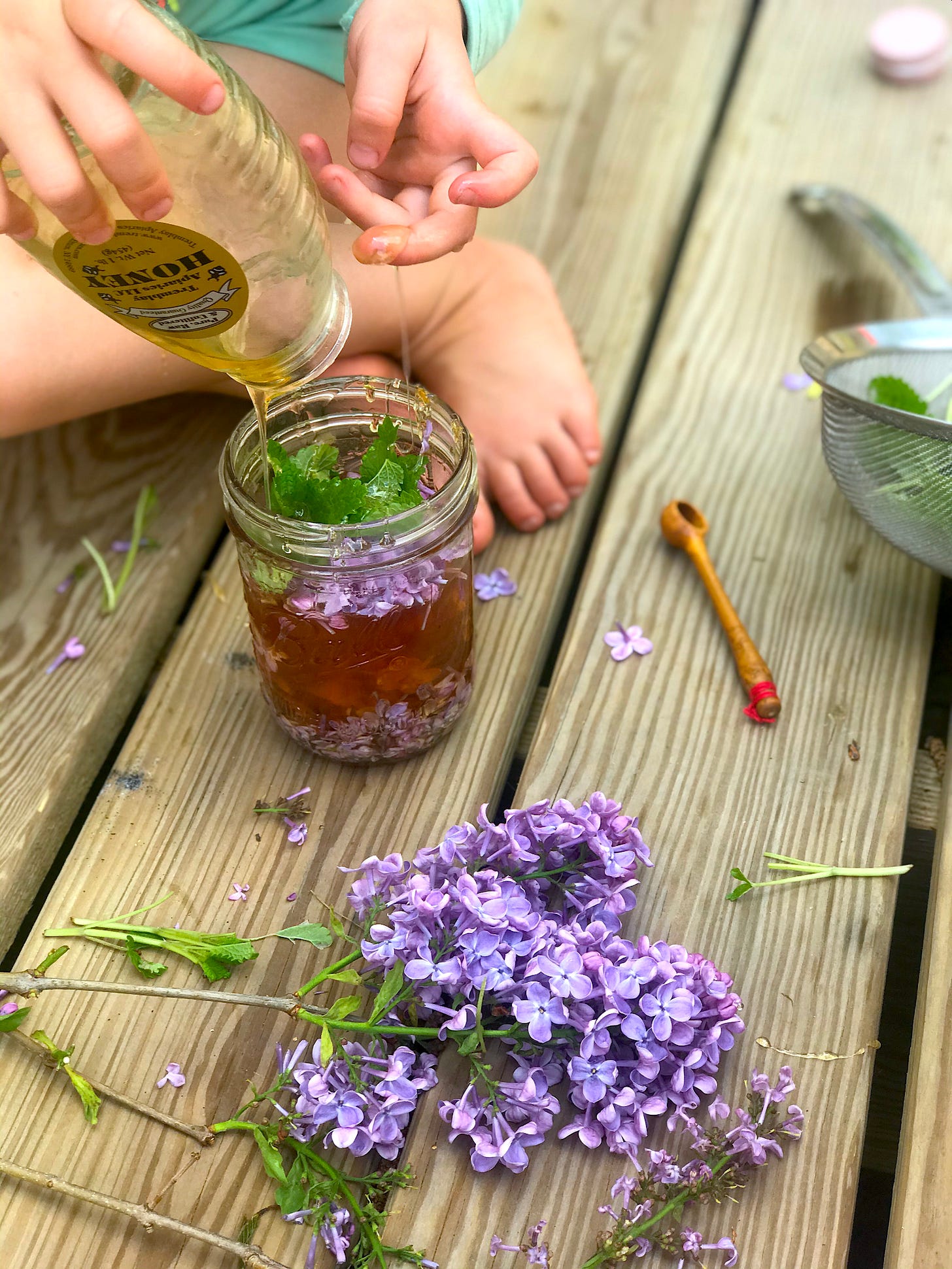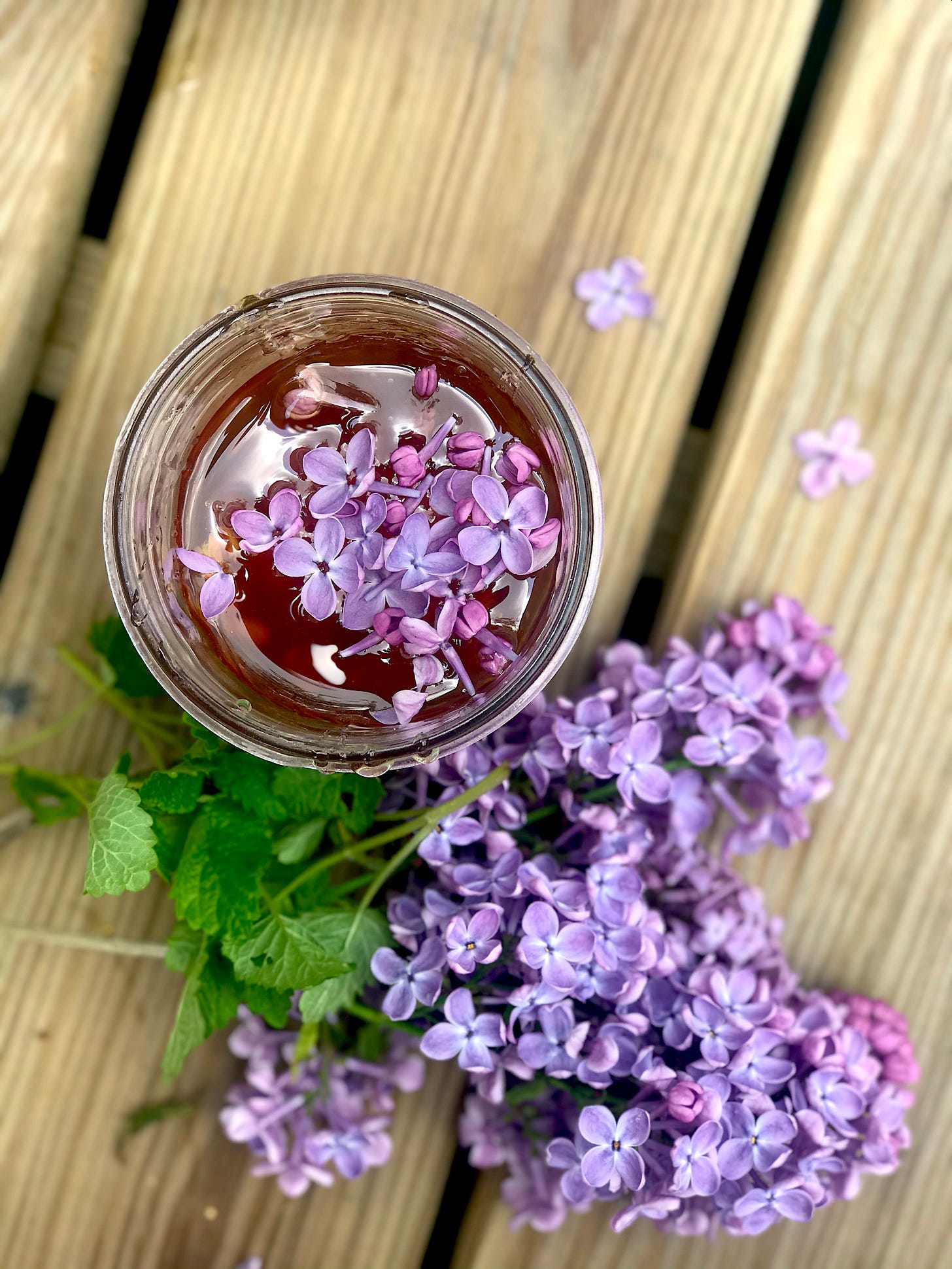How Spring Ephemerals Show Us Mother Love
Recipe for Lilac-Infused Honey, and Mother's Day Book Giveaway
Ciao belle!
I baked 300 oatcakes for events these past three weeks, bejeweling each with a violet. Every time I prepared a batch of dough, I wondered, will the violets still be out?
Spring ephemerals arrive in a great sweeping wave, and recede as quickly as they come. Ramps, trillium, the juicy blossoming branches of the crab apple, lungwort, daffodils, trout lily, tulips, lilacs and so on.
But if you can dive into the deep, little pocket of their lives, time with them expands.
I feel this with the violets, collecting hundreds from the dewy grass at sunrise. Sipping their ocean blue tea while finishing my event preparations before the girls wake up. The blossoms mirror the girls’ fleeting childhood. I don’t want to miss it.
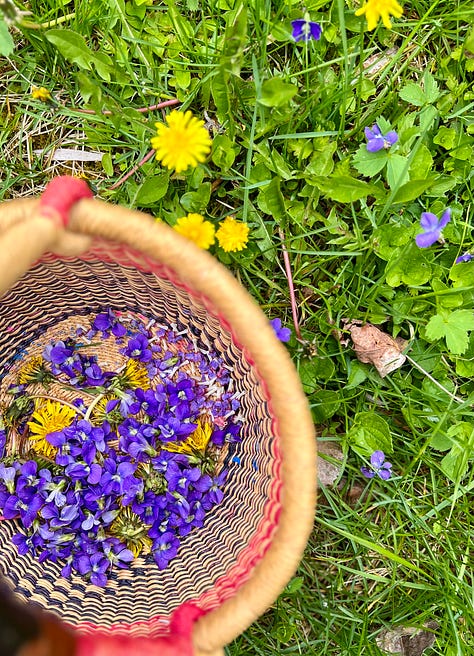

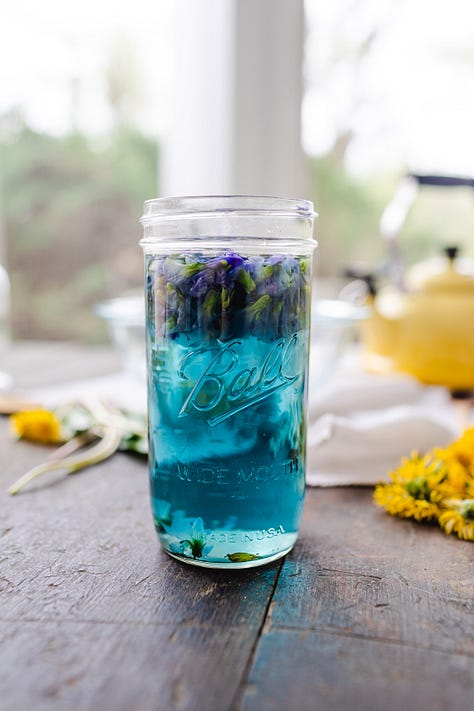
They wake up and I follow them to the base of the pine tree, where they’ve been keeping guard over a nest of baby bunnies.
We remove the grate we’ve temporarily placed over the nest, to keep the kittens from getting in, and stand for some time watching the bunnies timidly stick their noses out of the hole. Their eyes are still shut tight.
I know the girls are aware of this precious moment, and I’m reminded of the way Spring, and its ephemeral gifts and beauty, teach us two things:
Slow down and pay attention. We tend to get caught up in the blasting sunshine and the need to get, things, done. Build the garden, clean the garage, go to a barbecue, host one, repeat. In our hurry, the small miracles are missed. Our children grow up. The violets disappear without our ever having greeted them. At my events, I was overjoyed to answer the questions over and over again, “Is this a flower?” “Can I eat it?” “Where can I find it?” Yes! Yes! It IS a flower and you CAN eat it. Go home and look in the grass. You’ll see them there now, but they’ll be gone soon.
You are cared for. This was the theme of my last newsletter, and it continues to be prominent for me. If there were ever a time of year when the earth is showering us with love, it is now. Spring is positively flourishing with medicine, just when we need it most. There are balms for all the season’s challenges, from allergies to spring colds and feeling mentally frazzled (such as wild violet toner and lilac honey - recipe below). If you aren’t imbibing the earth’s gifts with tea, food or medicine, it’s balm enough to stick your nose in the lilacs or watch the sun stream through the translucent tulips!
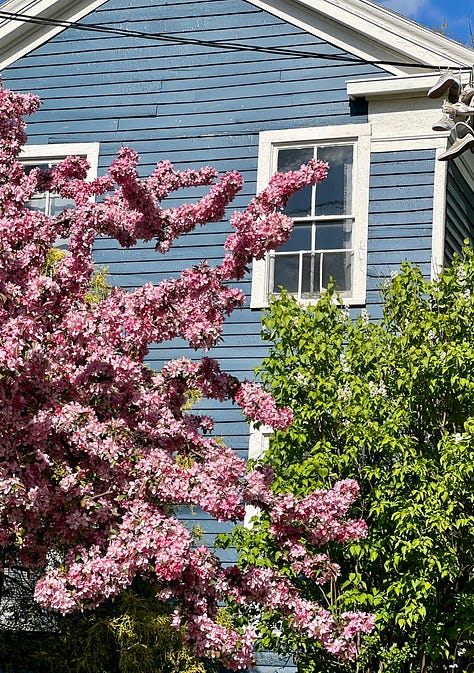

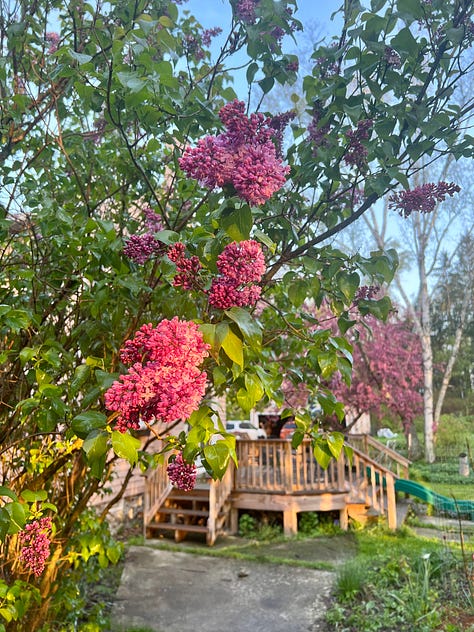



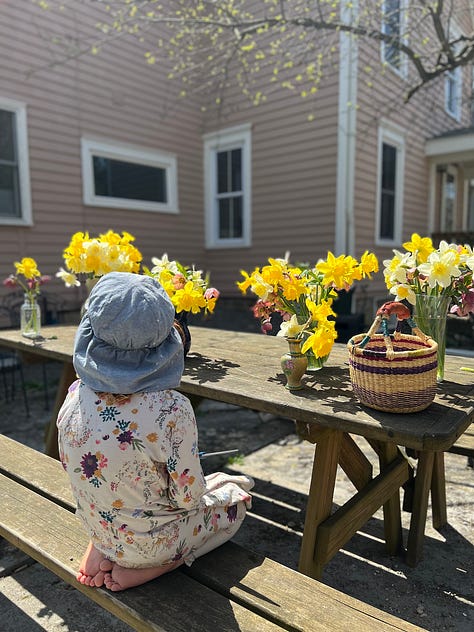


As Mother’s Day approaches, I like to think about how the earth is mothering me, how I can mother myself, and how I can mother my children.
The circle of generations marches on alongside the wheel of the year. And with it, the one thing we know to be true: it is ephemeral, savor it.
This is why I always turn back to the soft, comforting embrace of the earth, for myself and for my children. (Ok, sometimes it’s harsh and cold and barren, but it’s always real and wild, and the sun eventually comes out and there’s something delicious.)
This is why I wrote Seasonal Family Almanac, and why I’ve been following the work of Rachel Tidd at Wild Learning, who is also devoted to weaving nature into her children’s lives through reading, math, and so much more.
I’m thrilled to share that Rachel and I are offering a Mother’s Day giveaway with a signed copy of each of our books (head over to IG for entry details).
However you choose to spend Mother’s Day, take a moment to step outside and dance on the earth. No really, do it! Barefoot! And celebrate Mother Earth, the mothers and caretakers in your life, and if you are a mother … then by golly … your own glorious self.
MUA! XO
Emma
Lilac-Infused Honey
Edible blooming lilacs (Syringa vulgaris) fill an entire yard or city block with their intoxicating scent.The astringent flowers are a topical ally for the skin, in particular for cuts and rashes. Internally, they can help with gastrointestinal issues and fever reduction. Honey is a wonderful medium for drawing out lilac’s medicinal properties and aromatics. Spread this honey on a scrape or cut, drizzle it on toast, swirl it into tea, or simply close your eyes and eat a spoonful. Adapt this easy recipe for other flowers and herbs!
NOTES: Harvest lilac flowers first thing in the morning, selecting the freshest blossoms that haven’t browned. Experiment with other blends like cinnamon (ground or sticks) for its antioxidant and antiviral qualities, rose petals combined with hawthorn berries for heart opening, lavender and chamomile for calming, and lemon balm to manage stress and anxiety.
Yield: Varies
Ingredients:
Fresh Lilac Flowers
Pourable Raw Honey
Choose a glass jar for the infusion.
Harvest enough flower petals to fill the jar three-quarters full.
You will just be using the flowers, not the stems, so you can trim just the flowers off the shrub. Spread them on a clean tea towel and allow any excess moisture to evaporate for 6 to 8 hours. This will prevent water from mixing into the honey, which can cause it to spoil.
Once dry, place the petals in the glass jar. Pour honey over the flowers until it seeps through the flowers and reaches the neck of the jar. Use a spoon to remove air bubbles and tamp down the flowers so they are fully submerged. Top off with honey as needed. Seal the jar, put it in a cool, dry place, and let the honey infuse for at least 2 weeks and up to 6 weeks. The flowers will rise to the surface; stir them daily or as often as you remember.
When ready to use the honey, scoop out the flowers with a spoon. The flowers are edible, so you can also choose to leave all or some in the honey.
Store in a sealed jar at room temperature for up to 6 months or in the refrigerator up to 1 year.
Dried Herb–Infused Honey
To make infused honey with dried herbs, begin by lightly mincing or quickly grinding them in a food processor or blender. Fill a jar of choice half full with the ground/chopped herbs. Pour honey over the herbs up to the neck of the jar and proceed with the recipe for lilac flowers. Store in a cool, dry place for up to 1 year.




